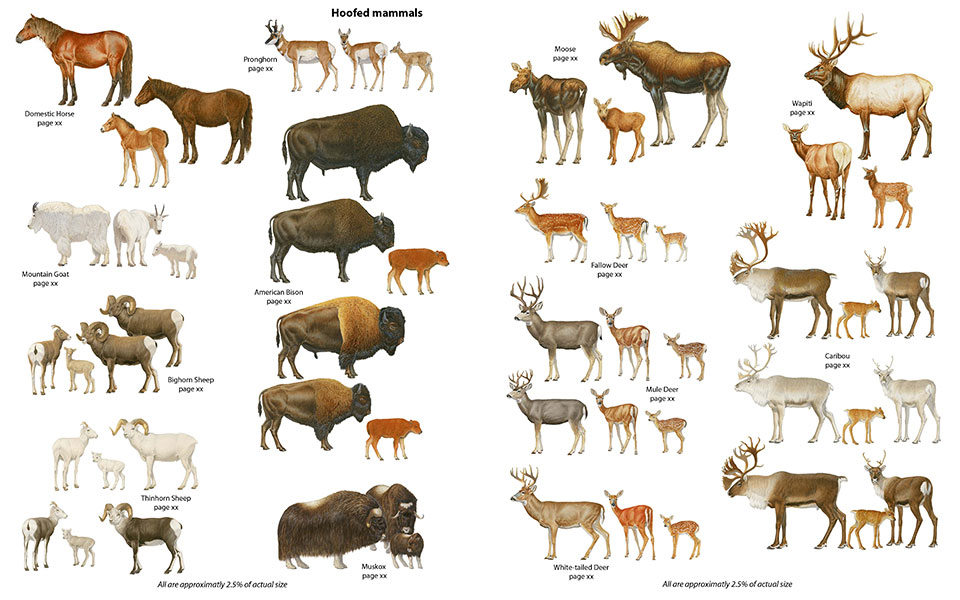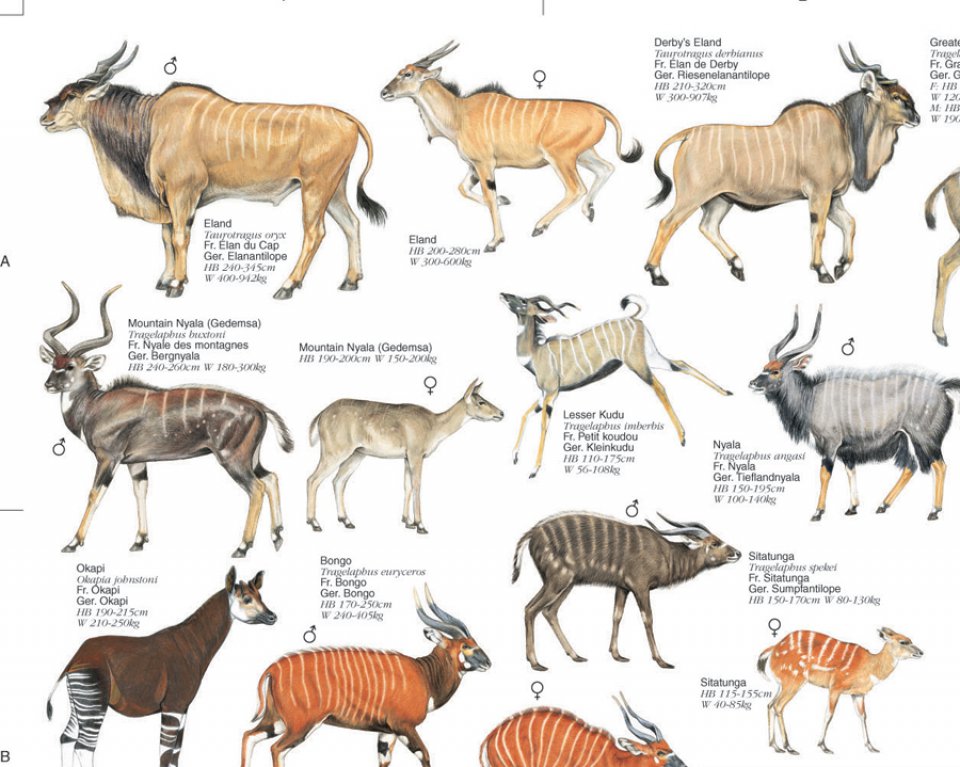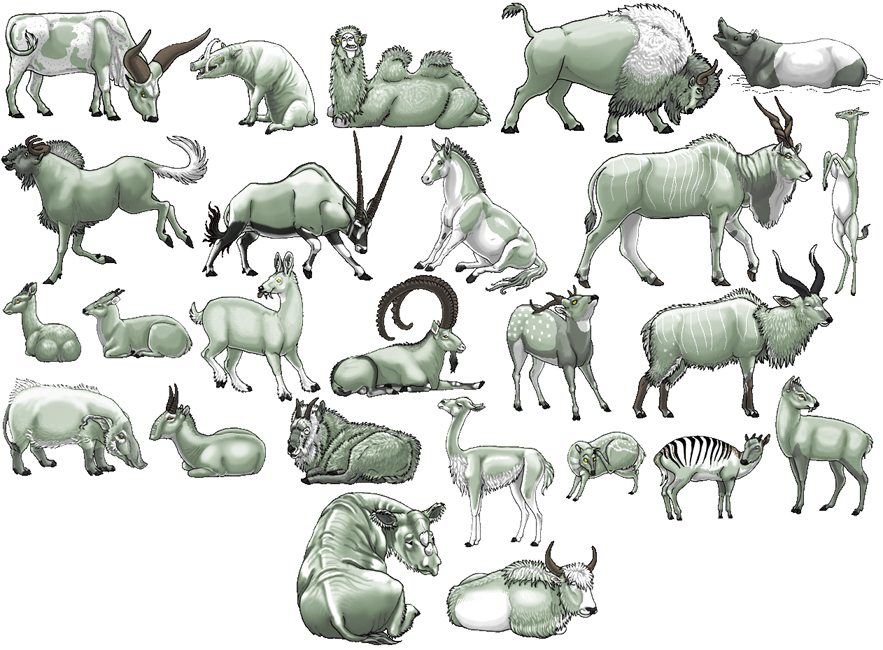| Animals World |
|
|
Ungulate
Ungulates are the hoofed mammals, belonging
to the phylum Chordata. The word "ungulate"
comes from Latin ungula, meaning "hoof."
Ungulates are a large group of dissimilar vertebrate
animals, grouped together because their
outermost toe joints are encased in hooves. There
are four ungulate orders. Those ungulates having
an odd number of toes belong to the order
Perissodactyla. This includes horses (one-toed),
rhinoceroses (three-toed), and tapirs (four-toed
on the front feet and three-toed on the back feet).
Entirely even-toed ungulates belong to the order
Artiodactyla. This includes pigs (four-toed) and
two-toed ruminants such as camels, giraffes, antelope,
deer, cattle, sheep, and goats.
The two other orders are Proboscidea (elephants)
and Hyracoidea (rabbitlike hyraxes). The
size extremes among ungulates range from the
seven-ton male African elephant to the rabbitsized
dik-dik antelope. Most ungulates are herbivores.
Ungulates are also the only mammals with
horns or antlers, although not all of them have this
bony headgear. They are native to all earth's continents
except Australia.
|
Look also: Most Popular AnimalsPrincipal Terms
antlers: branched, temporary horns made
of solid bone, shed and regrown yearly |
|
Copyright 2016 |
|



